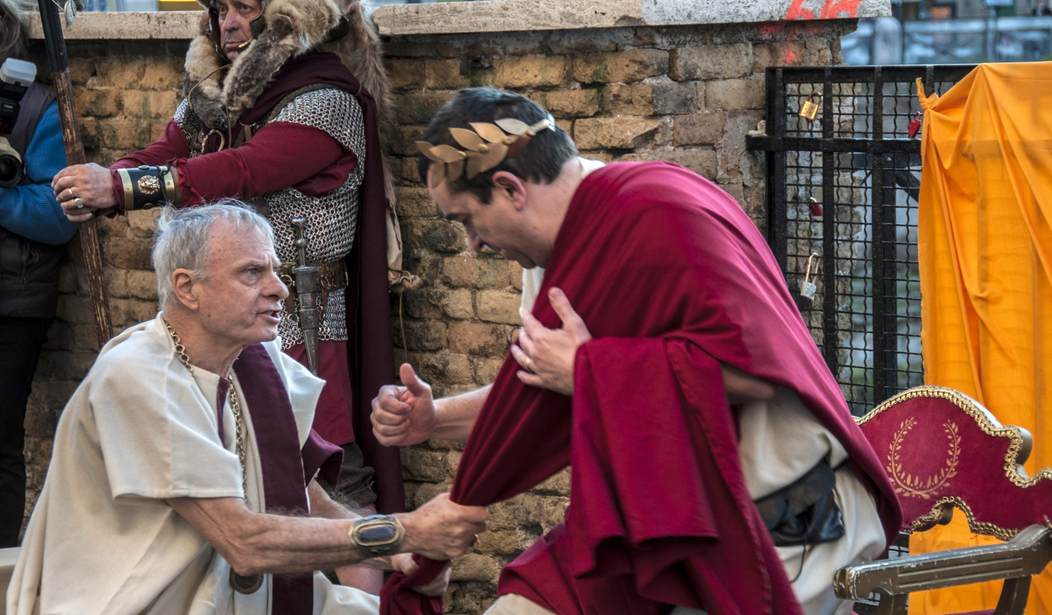In the Commentaries, Julius Caesar discusses his brief invasion of Britain:
These matters being arranged, finding the weather favorable for his voyage, he set sail about the third watch, and ordered the horse to march forward to the further port, and there embark and follow him. As this was performed rather tardily by them, he himself reached Britain with the first squadron of ships, about the fourth hour of the day, and there saw the forces of the enemy drawn up in arms on all the hills. The nature of the place was this: the sea was confined by mountains so close to it that a dart could be thrown from their summit upon the shore. Considering this by no means a fit place for disembarking, he remained at anchor till the ninth hour, for the other ships to arrive there. Having in the mean time assembled the lieutenants and military tribunes, he told them both what he had learned from Volusenus, and what he wished to be done; and enjoined them (as the principle of military matters, and especially as maritime affairs, which have a precipitate and uncertain action, required) that all things should be performed by them at a nod and at the instant. Having dismissed them, meeting both with wind and tide favorable at the same time, the signal being given and the anchor weighed, he advanced about seven miles from that place, and stationed his fleet over against an open and level shore.
Now, the site of Caesar’s landing has been discovered:
The first Roman invasion of Britain by Julius Caesar in 55BC is a historical fact, with vivid accounts passed down by Tacitus, Cicero and Caesar himself. Yet, despite a huge landing force of legionaries from 800 ships, no archaeological evidence for the attack or any physical remains of encampments have ever been found. But now a chance excavation carried out ahead of a road building project in Kent has uncovered what is thought to be the first solid proof for the invasion.
Archaeologists from the University of Leicester and Kent County Council have found a defensive ditch and javelin spear at Ebbsfleet, a hamlet on the Isle of Thanet. The shape of the ditch at Ebbsfleet, is similar to Roman defences at Alésia in France, where a decisive battle in the Gallic War took place in 52 BC. Dr Andrew Fitzpatrick, Research Associate from the University of Leicester’s School of Archaeology and Ancient History said: “Caesar describes how the ships were left at anchor at an even and open shore and how they were damaged by a great storm. This description is consistent with Pegwell Bay, which today is the largest bay on the east Kent coast and is open and flat.
Fascinating stuff. If you’ve never read the Commentaries, which likely started out as dispatches from the field, first in Gaul and later during the civil war between the forces of Pompey and Caesar, you really should. They make as riveting reading today as they did more than two thousand years ago, and lay down the principles and practices of leadership for every Western military and political leader who followed.









Join the conversation as a VIP Member